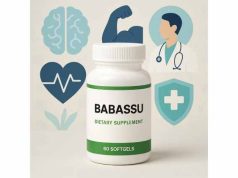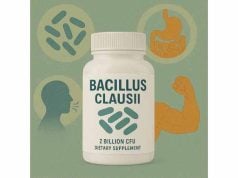
The balsam fir (Abies balsamea) has long been treasured for more than its fresh, piney aroma—it’s a powerful botanical supplement with roots in traditional medicine and modern wellness alike. Extracted from the resin, bark, or needles of this iconic North American evergreen, balsam fir is celebrated for its soothing effects on the respiratory system, natural anti-inflammatory action, and gentle stress relief. Whether used as a tea, oil, tincture, or capsule, balsam fir offers a unique spectrum of health benefits, from supporting immune function to alleviating discomfort. Let’s discover how this forest remedy is making its mark as a holistic supplement for mind and body.
Key Takeaways
- Natural Respiratory Support: Balsam fir is renowned for helping ease congestion and soothe coughs thanks to its expectorant and antimicrobial properties.
- Anti-Inflammatory and Analgesic Effects: This supplement may reduce inflammation, relieve muscle aches, and aid minor joint discomfort.
- Traditionally Used for Stress Relief: Its essential oil is valued in aromatherapy for calming nerves and promoting relaxation.
- Typical Dosages Vary: Ranges depend on the form, with most extracts and teas used up to twice daily—always follow product guidelines.
- Generally Safe, but Not for Everyone: Mild side effects are rare, but those with pine allergies or certain medical conditions should consult a healthcare provider.
Table of Contents
- Balsam Fir Extract: Origins and Holistic Properties
- How Balsam Fir Works: Science Behind Its Natural Healing Compounds
- Evidence-Based Benefits and Top Uses of Balsam Fir Supplements
- Balsam Fir Supplement Safety, Side Effects, and Interactions
- Balsam Fir Dosage, Usage, and Best Practices for Administration
- Frequently Asked Questions about Balsam Fir
Balsam Fir Extract: Origins and Holistic Properties
The balsam fir tree, native to the boreal forests of North America, has held an esteemed place in both indigenous and folk medicine for centuries. The supplement forms of balsam fir—derived from its resin, needles, bark, and essential oil—bring together a complex array of natural compounds, making it an increasingly popular choice in natural health and wellness communities.
What is Balsam Fir?
Balsam fir is a coniferous evergreen tree, recognized by its symmetrical shape, fragrant needles, and distinctive resin blisters on its bark. Traditionally, every part of the tree has found a use:
- Resin (Balsam): Thick and sticky, this fragrant substance was historically applied to wounds and used in poultices.
- Needles: Brewed into teas for respiratory complaints and as a gentle tonic.
- Bark: Occasionally incorporated in decoctions or tinctures for its soothing qualities.
- Essential Oil: Steam-distilled from the needles or twigs, widely used in aromatherapy and topical blends.
Traditional Medicine and Cultural Uses
Native American tribes were among the first to harness balsam fir’s healing properties. They employed its resin as a natural antiseptic for cuts and sores, while the steam from boiling needles was inhaled to clear airways. Early settlers adopted these traditions, and balsam fir became a staple in “forest medicine,” valued for both external and internal applications.
How It’s Harvested and Processed
Modern balsam fir supplements and oils are produced through careful harvesting and extraction techniques designed to preserve the tree’s natural actives:
- Essential Oil: Obtained by steam distillation of needles or twigs. The result is a clear, highly aromatic oil rich in therapeutic compounds.
- Resin Extract: Collected from naturally occurring blisters or by carefully tapping the bark, then filtered and purified.
- Dried Needles/Bark: Gathered, cleaned, and either ground into powders or steeped to create tinctures and teas.
Phytochemical Profile: What’s Inside?
Balsam fir’s impressive health effects stem from its rich spectrum of plant compounds, including:
- Monoterpenes: Especially bornyl acetate and alpha-pinene, offering anti-inflammatory and antimicrobial benefits.
- Phenolics and Flavonoids: Antioxidants that help protect cells from free radical damage.
- Resin Acids: Provide natural defense against microbes and support skin healing.
- Volatile Oils: The aromatic compounds responsible for its calming and decongestant effects.
Modern Supplement Forms
Today, balsam fir is available in multiple forms for internal and external use:
- Essential Oil: For inhalation, topical blends, and diffusers.
- Capsules and Tinctures: Concentrated extracts for targeted wellness support.
- Herbal Teas: Made from dried needles, offering a mild, aromatic infusion.
- Resin Salves or Balms: Topical preparations to soothe skin or minor muscle discomfort.
Unique Position Among Evergreen Supplements
Unlike pine or spruce, balsam fir is known for its milder scent and gentle action, making it especially well-tolerated by most users. Its holistic properties mean it addresses both body and mind—helping with everything from breathing easier to unwinding after a long day.
Summary Table: Balsam Fir at a Glance
| Feature | Details |
|---|---|
| Botanical Name | Abies balsamea |
| Plant Parts Used | Needles, resin, bark, twigs |
| Main Active Compounds | Monoterpenes, resin acids, flavonoids |
| Supplement Forms | Oil, tincture, capsules, tea, salve |
| Primary Traditional Uses | Respiratory relief, wound care, relaxation |
| Modern Benefits | Congestion, inflammation, minor pain, stress |
| Safety Profile | Generally safe, rare mild side effects |
With its longstanding history and rich phytochemistry, balsam fir stands out as a nature-inspired supplement for holistic health and gentle relief.
How Balsam Fir Works: Science Behind Its Natural Healing Compounds
Understanding how balsam fir delivers its benefits requires a closer look at its bioactive components and the way they interact with the human body. The synergy of essential oils, phenolics, and resin acids accounts for the plant’s wide range of effects.
Key Bioactive Compounds and Their Actions
- Bornyl Acetate: The principal monoterpene in balsam fir oil, this compound is credited with calming, anti-inflammatory, and mild pain-relieving effects. It works by modulating inflammatory pathways and relaxing smooth muscle tissues, which helps explain balsam fir’s ability to ease coughs and muscle tension.
- Alpha-Pinene and Beta-Pinene: These volatile terpenes have strong antimicrobial and bronchodilatory actions, making balsam fir especially effective for respiratory support. They help open airways, making it easier to breathe and aiding the clearance of mucus.
- Phenolic Compounds: These antioxidants neutralize free radicals and may reduce oxidative stress, supporting overall cellular health and potentially slowing signs of aging.
- Resin Acids (e.g., abietic acid): These have been studied for their ability to support wound healing and protect against certain bacteria and fungi, contributing to balsam fir’s traditional use in topical salves.
Mechanisms of Action: What Happens in the Body
- Respiratory System Support: When inhaled (either as steam or essential oil vapor), the volatile compounds in balsam fir help thin mucus, relax airway muscles, and create a soothing sensation. This makes it easier to expel phlegm and breathe deeply—useful for coughs, colds, and even allergy congestion.
- Anti-Inflammatory Response: By interacting with key enzymes and signaling molecules, balsam fir’s terpenes dampen inflammation. This is beneficial for those with mild muscle aches, joint stiffness, or inflammatory skin conditions.
- Mild Analgesic (Pain-Relieving) Effects: Topical use of balsam fir resin or oil can provide localized relief from sore muscles, minor joint pain, or tension headaches. The warming, aromatic qualities enhance comfort and relaxation.
- Antimicrobial and Antifungal Defense: Lab studies demonstrate that balsam fir extracts inhibit the growth of several common pathogens. While more research in humans is needed, this suggests a supportive role for immune health and minor wound care.
- Aromatherapeutic Benefits: The calming scent of balsam fir oil is linked to decreased stress levels, improved mood, and enhanced relaxation. This makes it a favorite in both home and clinical aromatherapy practices.
Bioavailability and Delivery
- Inhalation: Delivers volatile actives rapidly to the respiratory tract and bloodstream.
- Topical Application: Allows resin acids and essential oil components to penetrate skin and target local inflammation or irritation.
- Oral Use (teas, tinctures): Absorbs through the digestive tract, with systemic distribution of antioxidants and mild expectorant effects.
Comparisons to Other Evergreen Remedies
While other conifers (like pine or spruce) share some similar compounds, balsam fir is notable for its gentler action and broader safety profile, especially for those sensitive to more resinous or pungent evergreens.
Scientific and Traditional Wisdom Meet
Although modern research on balsam fir is still growing, early results support many of the traditional claims. Its anti-inflammatory, antimicrobial, and calming properties are confirmed by the presence of potent plant compounds. Ongoing studies continue to explore its role in respiratory health, topical wound care, and stress management.
The Entourage Effect: Why Whole-Plant Extracts Matter
The full spectrum of actives in balsam fir works synergistically. Supplements that retain a range of terpenes, phenolics, and resins may offer more comprehensive benefits than isolated extracts, echoing the wisdom of traditional herbalists.
Summary of Mechanisms
- Supports respiratory health by clearing airways and reducing inflammation.
- Eases muscle and joint discomfort through anti-inflammatory and analgesic action.
- Fights microbes, helping protect skin and immune function.
- Calms the nervous system, promoting mental relaxation and stress relief.
Evidence-Based Benefits and Top Uses of Balsam Fir Supplements
Balsam fir isn’t just a wintertime fragrance—it’s a multi-purpose supplement valued for tangible wellness results. Drawing on both tradition and emerging research, here are the most evidence-supported ways people use balsam fir to enhance their health.
1. Respiratory Health and Congestion Relief
Perhaps the best-known benefit of balsam fir is its support for clear breathing. The essential oil and tea are widely used to:
- Soothe coughs and loosen mucus, acting as a natural expectorant.
- Open sinuses and airways, easing symptoms of colds, bronchitis, and seasonal allergies.
- Reduce throat irritation and promote easier, deeper breathing during respiratory discomfort.
Many users add a few drops of balsam fir oil to a diffuser or hot water for steam inhalation at the first sign of congestion.
2. Anti-Inflammatory Support for Muscles and Joints
Whether from strenuous activity, arthritis, or daily aches, inflammation can take a toll. Balsam fir’s anti-inflammatory terpenes and resin acids:
- Provide natural relief from sore muscles and stiff joints.
- Reduce minor swelling and redness when applied topically.
- May support recovery after exercise or physical exertion.
Balsam fir salves and massage oils are popular among athletes, active adults, and those managing mild discomfort.
3. Stress Reduction and Mood Balance
The subtle, refreshing aroma of balsam fir is more than pleasant—it interacts with the brain’s limbic system, which governs emotion and relaxation. Aromatherapy with balsam fir oil can:
- Promote a sense of calm and relaxation, ideal for stress or anxiety.
- Improve mood, particularly during winter months or periods of fatigue.
- Enhance sleep quality when used as part of a bedtime routine.
4. Immune System Support
Through its antimicrobial and antioxidant properties, balsam fir supplements may help:
- Defend against common pathogens during cold and flu season.
- Support overall immune function by reducing oxidative stress.
- Speed the healing of minor wounds and skin irritations.
5. Skin Health and Topical Healing
Traditional use and modern balms alike highlight balsam fir’s role in:
- Soothing minor cuts, scrapes, and insect bites.
- Reducing itchiness and redness in irritated skin.
- Moisturizing and protecting dry, chapped areas.
6. Digestive Aid
Balsam fir tea or diluted tinctures have been used to settle mild stomach upset, support digestion, and gently stimulate appetite, especially after illness or during convalescence.
Who Benefits Most from Balsam Fir Supplements?
- Those prone to seasonal respiratory challenges (congestion, coughs, allergies)
- Individuals with minor muscle or joint aches
- People experiencing stress, low mood, or sleep disruption
- Adults seeking natural immune and skin support
- Fans of clean-label, nature-derived wellness products
A Few Precautions on Use
Although balsam fir is generally safe, it’s important to avoid high-concentration products on sensitive skin or to ingest only supplements specifically prepared for internal use. Quality sourcing and proper dosing are key.
Summary Table: Balsam Fir’s Core Benefits
| Benefit | How It Helps | Common Use Forms |
|---|---|---|
| Respiratory support | Clears airways, soothes cough, eases sinus | Oil, tea, steam |
| Muscle/joint comfort | Reduces inflammation and pain | Salve, massage oil |
| Stress relief | Calms nerves, improves mood | Essential oil, bath |
| Immune/skin health | Fights germs, supports healing | Balm, tincture, tea |
| Digestive wellness | Eases upset, gentle tonic | Tea, tincture |
Used wisely, balsam fir is a reliable botanical ally for a broad spectrum of wellness goals.
Balsam Fir Supplement Safety, Side Effects, and Interactions
While balsam fir is widely valued for its natural healing properties and general safety, it’s still important to approach this supplement with the same care you’d give any botanical remedy. Understanding its tolerability, potential side effects, and interactions will help ensure your balsam fir experience is positive and risk-free.
General Safety Overview
For most healthy adults, balsam fir supplements—whether taken as tea, capsules, tincture, or diluted essential oil—are well-tolerated when used appropriately. Its long history in folk and indigenous medicine reflects a generally safe profile, especially when compared to some harsher herbal remedies.
- Mild and gentle: Balsam fir is less likely than many conifers (like pine or juniper) to cause sensitivity or harsh reactions, especially in topical and aromatherapy use.
- Quality matters: Always select reputable brands that provide details about sourcing, purity, and third-party testing.
Possible Side Effects
Even natural remedies can cause side effects in some individuals. With balsam fir, these are typically rare and mild, but worth noting:
- Digestive upset: Some people may experience mild nausea, stomach discomfort, or loose stools, particularly when consuming high doses of tea or tincture.
- Skin sensitivity: Direct, undiluted essential oil may irritate sensitive skin. Always dilute oils with a carrier oil (like coconut or almond) before topical use.
- Allergic reactions: Those with known sensitivities to evergreens, pine, or conifers should exercise caution, as rare allergic skin or respiratory reactions have been reported.
- Headache or dizziness: Strong aromas, especially in concentrated essential oil form, can occasionally cause headache or lightheadedness if inhaled in excess.
Who Should Exercise Extra Caution?
Certain groups should take special care with balsam fir supplementation:
- Pregnant or breastfeeding women: There is insufficient safety research for internal use of balsam fir during pregnancy or lactation. Consult a healthcare provider before using any form.
- Children: Essential oil and concentrated extracts should not be given to young children without professional guidance due to the risk of respiratory sensitivity or accidental overdose.
- Chronic medical conditions: People with asthma, severe allergies, or chronic respiratory issues should consult a physician before using balsam fir, especially in essential oil or inhaled forms.
- Medication interactions: Balsam fir may theoretically interact with blood thinners (due to mild resin anticoagulant properties) or sedatives (via its calming effects), though such interactions are rare. If you take prescription medications, check with your healthcare provider before starting supplementation.
Special Precautions for Essential Oil Use
- Dilution is critical: Never apply balsam fir essential oil directly to skin without diluting. A safe ratio is 2–3 drops per teaspoon of carrier oil.
- Do not ingest essential oil: Only use balsam fir essential oil internally if the product is specifically prepared and labeled as food grade, and then only under professional supervision.
- Aromatherapy safety: Use in well-ventilated areas and avoid direct inhalation from the bottle or diffuser for extended periods.
Adverse Reaction Checklist
Stop use and seek medical advice if you experience:
- Rash, swelling, or persistent skin irritation
- Wheezing, difficulty breathing, or chest tightness after inhalation
- Persistent gastrointestinal discomfort or allergic symptoms
Choosing Safe, High-Quality Products
- Look for clear labeling: Reputable brands specify the part of the tree used, the extraction method, and standardization where applicable.
- Check for purity: Seek out supplements and oils free from synthetic additives, pesticides, or heavy metals.
- Third-party testing: This ensures potency and safety, giving you confidence in your supplement’s contents.
Summary Table: Safety of Balsam Fir Supplements
| Safety Aspect | Details & Recommendations |
|---|---|
| Typical side effects | Mild stomach upset, skin sensitivity, rare allergy |
| At-risk groups | Pregnant/nursing, children, respiratory illnesses |
| Key interactions | Possible with blood thinners, sedatives |
| Essential oil advice | Always dilute for skin, never ingest undiluted |
| Product quality tips | Choose reputable, tested, clearly labeled brands |
With mindful selection and proper use, balsam fir is one of the safer and gentler plant-based supplements for most adults.
Balsam Fir Dosage, Usage, and Best Practices for Administration
Getting the most out of balsam fir means choosing the right form and dosage for your needs. Whether you’re reaching for respiratory support, stress relief, or muscle comfort, this section covers how to use balsam fir supplements safely and effectively.
Typical Dosage Guidelines
Dosages vary based on the preparation, your goals, and your unique health situation. Here’s a practical overview:
- Essential Oil (Aromatherapy):
- Add 3–5 drops to a diffuser with water and inhale for 15–30 minutes.
- For steam inhalation, use 1–2 drops in a bowl of hot water, tenting with a towel and inhaling for up to 10 minutes.
- For topical blends, mix 2–3 drops with 1 teaspoon carrier oil and apply to chest, neck, or sore muscles.
- Herbal Tea (Needles):
- Steep 1–2 teaspoons of dried balsam fir needles in hot water for 10–15 minutes. Drink up to twice daily for congestion, stress relief, or gentle digestive support.
- Tincture/Extract:
- Typical doses range from 0.5–1 mL (10–20 drops) diluted in water or juice, taken 1–2 times per day. Always follow product-specific instructions.
- Capsules/Tablets:
- Doses usually range from 250–500 mg per capsule, taken once or twice daily with food, depending on the brand and your needs.
- Topical Balm/Salve:
- Apply a small amount to affected areas as needed for muscle aches, minor joint pain, or irritated skin.
How to Use for Maximum Benefit
- Start low, go slow: Particularly with essential oil or tincture, begin with the lowest suggested dose to gauge your body’s response.
- Timing matters: For respiratory support, morning and evening use is common. For stress or sleep, use aromatherapy in the evening or before bed.
- Combine forms thoughtfully: Many find benefit from using a tea or capsule internally while using essential oil in a diffuser or as a topical massage.
- Hydrate well: Especially if using teas or tinctures, maintain good hydration for optimal effects.
Personalizing Dosage for Different Needs
- Respiratory health: Use tea, tincture, or steam inhalation at the first sign of congestion.
- Muscle/joint support: Topical salves and diluted essential oil can be applied after activity or as needed.
- Mood and stress relief: Diffuse essential oil or add a few drops to bathwater for calming effects.
Special Considerations
- Children and sensitive individuals: Use half the adult dose or as directed by a health professional.
- Elderly or those with health conditions: Start with a lower dose and monitor for any reactions.
Signs You May Need to Adjust Dosage
- No improvement in symptoms after a week or two of consistent use.
- Mild side effects that persist (reduce dose or switch form).
- Any allergic reaction (discontinue immediately).
Storing and Preserving Balsam Fir Supplements
- Store essential oils and tinctures in a cool, dark place.
- Keep teas and capsules tightly sealed and away from moisture.
- Check expiration dates and avoid using any product with a rancid or off smell.
When to Seek Professional Advice
- If you have a chronic health condition, take prescription medication, or are pregnant/nursing, consult your healthcare provider before starting balsam fir supplements.
- For children under 12, only use under the guidance of a pediatrician or herbalist.
Summary Table: Balsam Fir Dosage and Use
| Form | Typical Dose | Frequency | Common Uses |
|---|---|---|---|
| Essential oil | 3–5 drops in diffuser | 1–3x/day | Aromatherapy, congestion |
| Tea | 1–2 tsp dried needles | 1–2x/day | Respiratory, digestion |
| Tincture | 0.5–1 mL (10–20 drops) | 1–2x/day | Immune, stress support |
| Capsules | 250–500 mg | 1–2x/day | General wellness |
| Salve/balm | As needed | Topical use | Muscle, skin, joints |
By following these best practices and choosing the form that best fits your lifestyle, you can safely enjoy the full range of balsam fir’s natural health benefits.
Frequently Asked Questions about Balsam Fir
What is balsam fir used for in supplements?
Balsam fir supplements are primarily used for respiratory support, relieving muscle aches, reducing inflammation, and promoting relaxation. They are also valued for minor skin healing and immune support.
Is balsam fir essential oil safe for inhalation?
Yes, when properly diluted and used in moderation, balsam fir essential oil is considered safe for aromatherapy inhalation. Avoid direct, undiluted inhalation or prolonged exposure to high concentrations.
Can balsam fir supplements be taken daily?
Most people can safely use balsam fir teas, tinctures, or capsules daily, provided they follow recommended dosages. Essential oil should be used as directed, not ingested unless product is food grade and approved for internal use.
Are there any side effects to balsam fir?
Side effects are uncommon but may include mild digestive upset, skin irritation from undiluted oil, or rare allergic reactions. Always dilute essential oils and start with low doses.
Is balsam fir safe for children and pregnant women?
Balsam fir essential oil and strong tinctures are not recommended for young children or during pregnancy unless under professional guidance. Herbal teas in mild doses may be acceptable with healthcare approval.
Does balsam fir interact with medications?
Interactions are rare, but balsam fir may theoretically enhance the effects of sedatives or blood thinners. Consult your healthcare provider if you take medications or have chronic health concerns.
How should I choose a high-quality balsam fir supplement?
Look for reputable brands that specify sourcing, extraction methods, and third-party testing for purity. Avoid products with synthetic additives or unclear labeling.
Disclaimer:
This article is intended for educational and informational purposes only and is not a substitute for professional medical advice, diagnosis, or treatment. Always seek the advice of your physician or qualified health provider with any questions you may have regarding a medical condition or before starting any new supplement. Do not disregard professional medical advice or delay in seeking it because of something you have read here.
If you found this guide helpful, please consider sharing it with friends and family on Facebook, X (formerly Twitter), or your favorite platform. Follow us on social media to stay up to date with the latest wellness insights and supplement guides. Your support helps us continue providing trusted, high-quality content!










